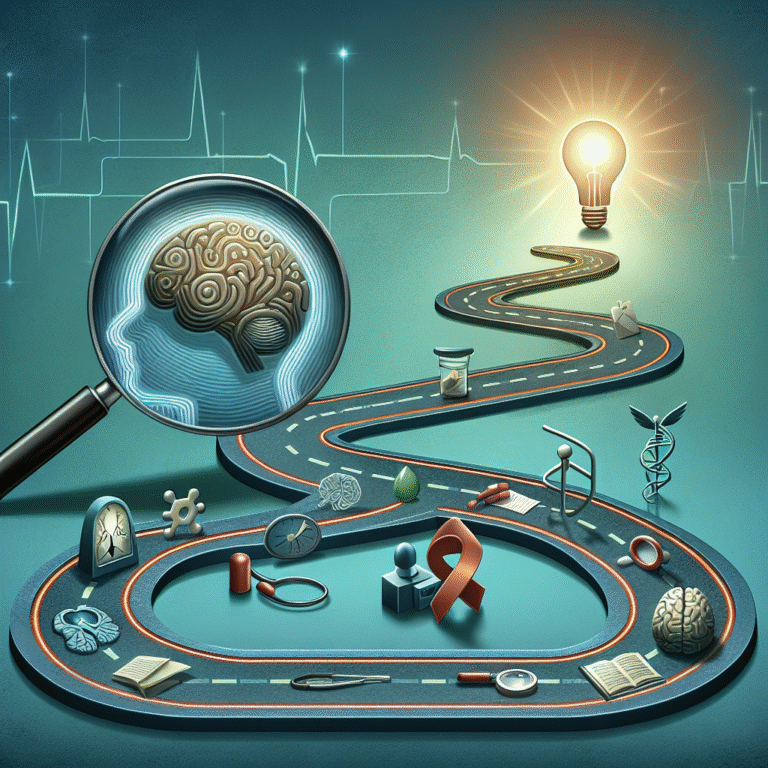Introduction
Pain is often seen merely as a physical experience, but its implications stretch far deeper into the realms of mental and emotional realms. Understanding Pain and Perception: Exploring the Psychological Dimensions of Suffering reveals how our minds interpret and respond to suffering, shaping our experiences and influencing our states of well-being. This examination not only illuminates the complexities of pain but also provides valuable insights that can enhance our coping strategies and, ultimately, our quality of life. So, how does our perception navigate the tumultuous waters of suffering? Let’s delve into this intricate interplay.
The Nature of Pain: Physical Versus Psychological
Definitions and Distinctions
Pain is commonly classified into two categories: acute and chronic. Acute pain is usually a direct response to an injury or disease, signaling a need for treatment. In contrast, chronic pain persists beyond the expected period of healing, often becoming a psychological burden in its own right. Understanding these distinctions sets the foundation for our exploration of Pain and Perception: Exploring the Psychological Dimensions of Suffering.
Grid Table: Types of Pain
| Type | Duration | Cause | Psychological Impact |
|---|---|---|---|
| Acute Pain | Short-term | Injury/Disease | High anxiety, stress |
| Chronic Pain | Long-lasting | Ongoing condition | Depression, frustration |
Case Study: The Role of Acute Pain
Consider Sarah, a 30-year-old athlete who twisted her ankle during a marathon. The pain was acute and motivated her to seek immediate treatment. In this instance, her acute pain was beneficial—it signaled a problem that needed addressing. However, her psychological response also included frustration and fear of incapacity, illustrating how Pain and Perception: Exploring the Psychological Dimensions of Suffering involves more than just the physiological aspect of pain.
Psychological Dimensions of Pain
The Biopsychosocial Model of Pain
The biopsychosocial model posits that pain is not merely a physical sensation but also affected by psychological and social factors. This multifaceted approach helps us understand the broader scope of suffering:
- Biological Factors: Genetic predispositions and neurochemical changes.
- Psychological Factors: Emotional state, personality traits, and previous experiences of pain.
- Social Factors: Cultural background, social support, and socioeconomic status.
Empowering Patients
By integrating these dimensions, healthcare providers can enhance treatment plans, catering not only to the physical symptoms but also addressing the emotional and social barriers faced by patients. Understanding Pain and Perception: Exploring the Psychological Dimensions of Suffering affirms that subjectivity plays a crucial role in how pain is experienced and processed.
The Influence of Perception on Pain
Perception: The Key to Managing Pain
Pain perception is shaped by an individual’s psychological state. When an individual is anxious or depressed, their perception of pain can magnify. Conversely, practices such as mindfulness can reduce the perception of pain, showcasing the significant role of mental state in pain management.
Chart: Perception’s Impact on Pain Levels
| Anxiety Level | Pain Intensity Perception |
|---|---|
| Low | Mild |
| Moderate | Moderate to High |
| High | Very High |
Case Study: The Mind-Body Connection
John, a 45-year-old office worker, experienced chronic lower back pain. Traditional treatments provided minimal relief. After engaging in cognitive behavioral therapy (CBT), which focused on changing his mindset and perceptions regarding pain, he reported a significant reduction in his pain levels. This case exemplifies the Pain and Perception: Exploring the Psychological Dimensions of Suffering—demonstrating that altering one’s perception can lead to transformative healing.
Mechanisms of Pain Perception
The Gate Control Theory
One of the fundamental theories explaining how we perceive pain is the Gate Control Theory, proposed by Melzack and Wall in 1965. According to this theory, the spinal cord contains a "gate" that can either block or allow pain signals to reach the brain. Factors like emotional state, concentration, and distraction can influence this gate.
Neuroplasticity and Pain
The brain’s capacity to reorganize itself in response to injury—known as neuroplasticity—also plays a vital role in how we perceive pain. Chronic pain conditions can lead to changes in the brain’s structure and function, highlighting the need for holistic pain management approaches.
Coping Mechanisms: Bridging Pain and Perception
Cognitive Behavioral Techniques
Cognitive behavioral techniques are often employed to manage pain by altering thought patterns. Techniques such as reframing negative thoughts and practicing acceptance can transform how one experiences pain.
Mindfulness and Relaxation Techniques
Mindfulness meditation and progressive muscle relaxation are effective methods for reducing perceived pain. By focusing on the present moment, individuals can alleviate anxiety and decrease the overall intensity of their pain experience.
The Role of Social Support in Pain Perception
Social Interaction and Pain Management
The presence of supportive networks can significantly influence coping strategies and perceptions of pain. Emotional and tangible support, such as encouragement from friends or family, can reduce feelings of isolation and helplessness.
Case Study: The Power of Community
Maria, a cancer survivor, credits her recovery partially to the support she received from her community group. The shared experiences and emotional backing were crucial in reshaping her perception of both her illness and the associated pain, highlighting the essence of Pain and Perception: Exploring the Psychological Dimensions of Suffering.
Practical Applications of Pain Management
Integrative Approaches
Integrating physical and psychological treatments offers a more comprehensive approach to pain management. Utilizing a mix of medication, therapy, and lifestyle modifications creates a multifaceted strategy that addresses both pain and perception.
Table: Common Integrative Techniques
| Technique | Description |
|---|---|
| Medication | Pain relievers or anti-inflammatory drugs |
| Psychotherapy | Cognitive Behavioral Therapy (CBT) |
| Mindfulness Practice | Meditation or guided imagery |
| Physical Therapy | Exercises to enhance mobility and strength |
| Support Groups | Community support for emotional healing |
Conclusion
Understanding Pain and Perception: Exploring the Psychological Dimensions of Suffering reveals the profound interplay between our psychological state and the experience of pain. The journey through suffering is not merely a physical one; it’s shaped by our thoughts, emotions, and social interactions. Armed with this knowledge, individuals can adopt more effective coping mechanisms, foster resilience, and ultimately enhance their overall quality of life.
FAQs
1. What is the difference between acute and chronic pain?
Acute pain is short-term and often directly related to injury or illness, while chronic pain persists over time, often without a clear cause.
2. How can perception alter pain management?
Our emotional and mental states can amplify or diminish the sensation of pain, making perception a crucial factor in effective management.
3. What psychological techniques can help manage pain?
Cognitive-behavioral therapy, mindfulness meditation, and support groups are effective methods for managing pain through altering perceptions.
4. How does social support influence pain perception?
Strong social networks can provide emotional and tangible support, helping to mitigate feelings of isolation and enhance coping strategies.
5. Are there holistic approaches to pain management?
Yes, integrative methods that combine physical treatments with psychological therapies often yield better outcomes in pain management.
By focusing on Pain and Perception: Exploring the Psychological Dimensions of Suffering, we can shift the narrative around pain, transforming suffering into an opportunity for growth and healing. Ultimately, the journey through pain can lead to profound insights, resilience, and a deeper understanding of the human experience.














